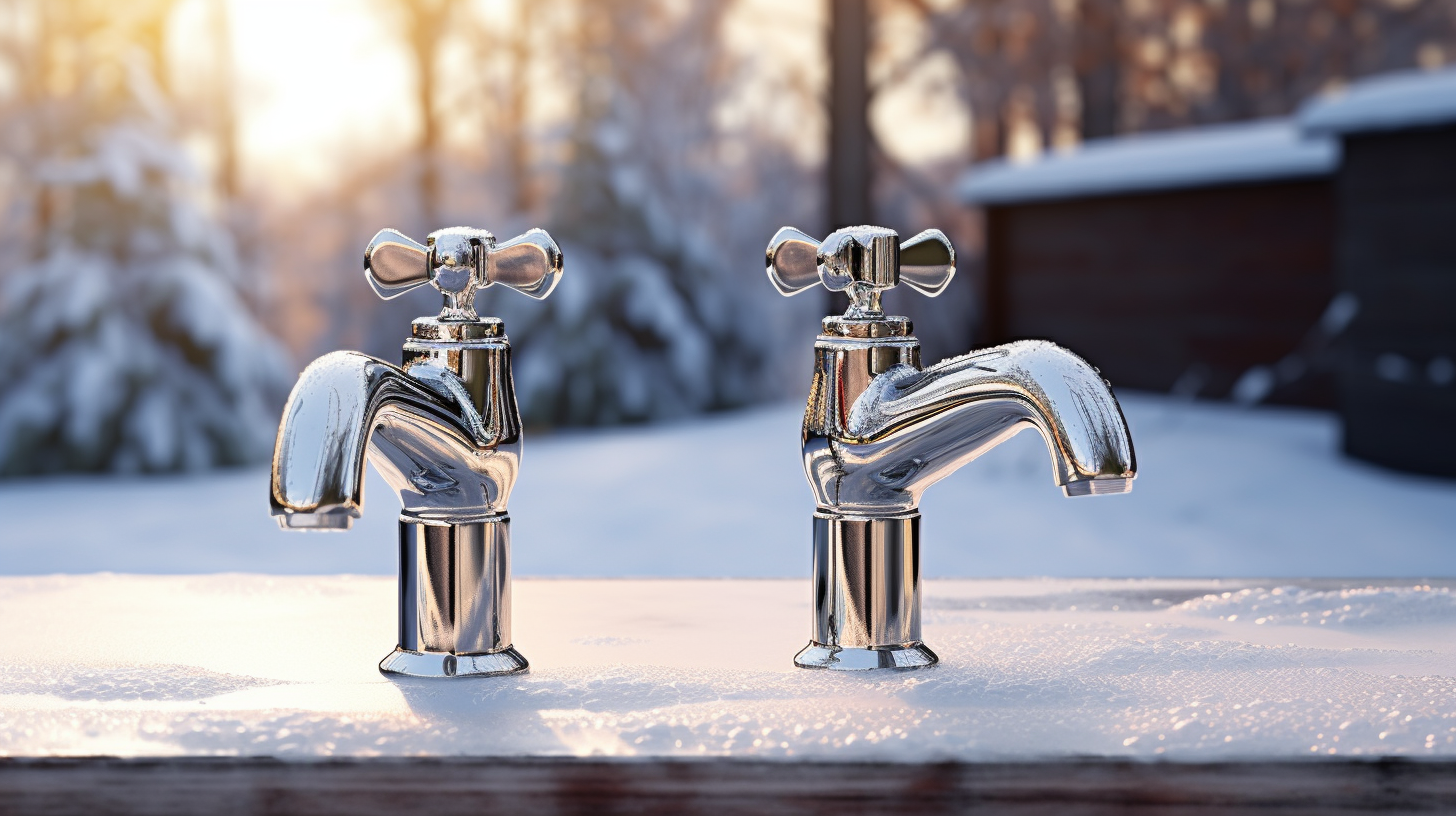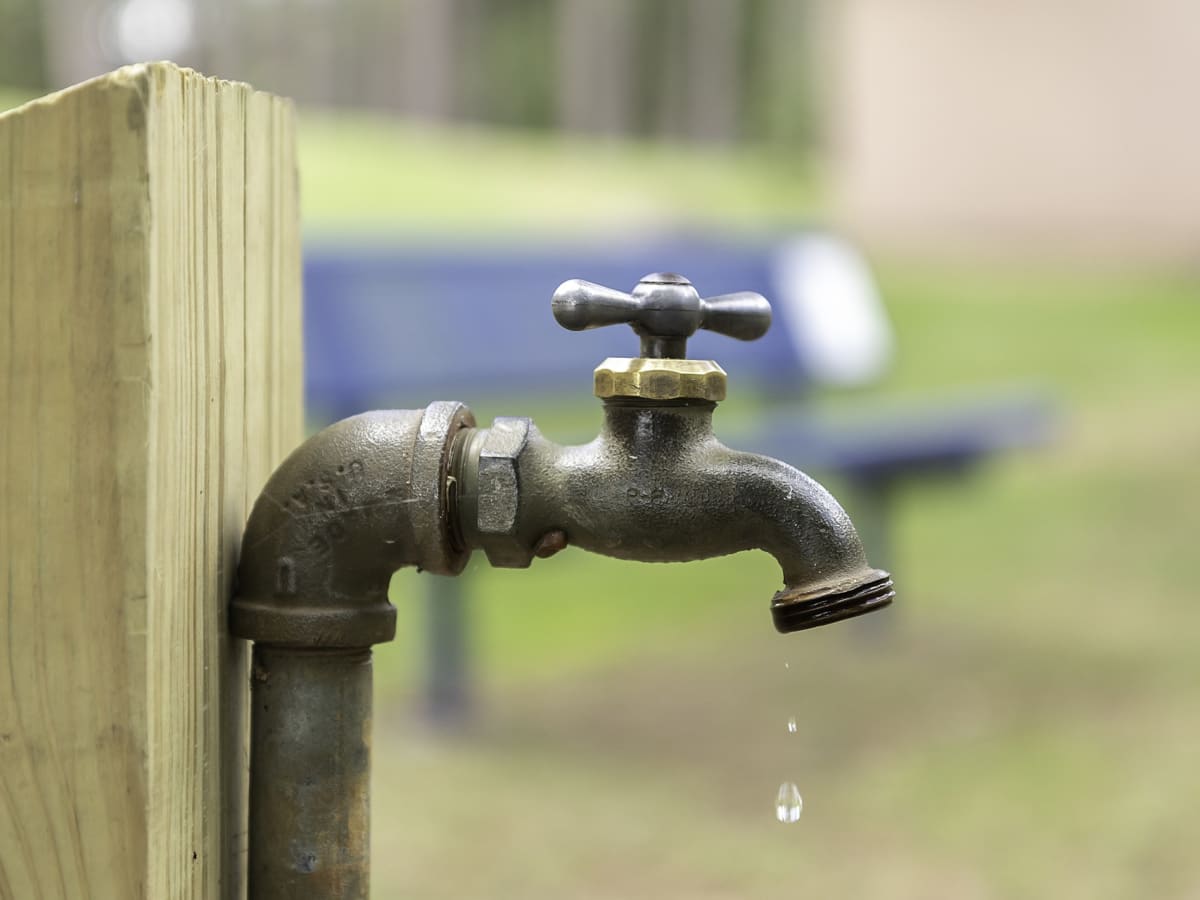Protecting outdoor faucets from freezing, especially for homeowners in regions where temperatures frequently drop below freezing. One of the most common issues during this time is the risk of outdoor faucets freezing. Frozen faucets can lead to burst pipes, which can cause significant water damage and costly repairs. Therefore, it’s crucial to take proactive measures to protect these outdoor fixtures. This detailed guide explores various strategies and solutions to prevent outdoor faucets from freezing, ensuring that your plumbing system remains intact and functional throughout the winter months.

Understanding the Risks
Before delving into the solutions, it’s essential to understand why outdoor faucets are particularly vulnerable to freezing. During cold weather, water inside the pipes connected to outdoor faucets can freeze, causing the water to expand. This expansion can exert pressure on the pipes, leading to cracks or bursts. Such incidents can result in water leakage, structural damage, and even mold growth if not addressed promptly.
Pre-Winter Preparation
- Inspect and Repair Leaks: Begin by inspecting your outdoor faucets and the connecting pipes for any leaks or damage. Even small leaks can contribute to freezing problems. Repair any issues before the onset of cold weather to ensure that your system is in good condition.
- Disconnect Garden Hoses: Always disconnect garden hoses from outdoor faucets before temperatures drop. Leaving hoses attached can trap water in the faucet and the pipe, increasing the risk of freezing.
- Drain the Faucets: After disconnecting hoses, open the outdoor faucets to drain any remaining water. This step ensures that there is no standing water in the pipes that could freeze and cause damage.
- Shut Off the Water Supply: Locate the shut-off valve for the outdoor faucets, typically found inside your home. Turn off the water supply to the outdoor faucets, then open the faucet outside to let any residual water drain out completely.
Insulation Solutions
- Pipe Insulation: Insulating the pipes leading to outdoor faucets is one of the most effective ways to prevent freezing. Use foam pipe insulation sleeves, which are easy to install and provide a layer of protection against cold temperatures. Ensure the insulation covers the entire length of the pipe, especially in unheated areas like basements or crawl spaces.
- Faucet Covers: Faucet covers, also known as faucet socks or caps, are an affordable and simple solution to protect outdoor faucets. These covers are made of insulating materials and are designed to fit snugly over the faucet. They provide an additional layer of protection against freezing temperatures. To install, secure the cover over the faucet and tighten any included straps or ties.
- Heat Tape: For areas with extremely cold winters, heat tape can offer added protection. Heat tape, or heating cable, is an electric product that wraps around pipes and provides consistent heat to prevent freezing. Follow the manufacturer’s instructions for installation and use a thermostat-controlled version for energy efficiency.

Long-Term Solutions and Additional Measures
- Indoor Shut-Off Valves: If your home does not have indoor shut-off valves for outdoor faucets, consider having them installed. These valves allow you to easily shut off the water supply to winterizing outdoor faucets from inside your home, preventing water from entering the pipes and freezing.
- Professional Winterization Services: Hiring a professional plumber to winterize your plumbing system can provide peace of mind. Plumbers can thoroughly inspect your pipes, apply necessary insulation, and ensure that all preventive measures are properly implemented.
- Regular Maintenance: Regular maintenance and inspection of your plumbing system can help identify potential issues before they become major problems. Schedule annual inspections with a professional plumber to ensure that your system is ready for winter.
Emergency Measures
Despite taking all preventive measures, there may still be instances where a freeze occurs. Here’s what to do in such situations:
- Thawing Frozen Faucets: If you suspect that an outdoor faucet has frozen, act quickly to thaw it. Use a hairdryer, heat lamp, or portable space heater to warm the faucet and the pipe gradually. Never use an open flame or blowtorch, as this can damage the pipes and pose a fire hazard.
- Locate the Freeze Point: If you cannot access the frozen faucet directly, try to locate the freeze point by feeling along the pipe for cold spots. Apply heat to the affected area until the water begins to flow again.
- Contact a Professional: If you are unable to thaw the frozen pipe or if the pipe has burst, contact a professional plumber immediately. They have the tools and expertise to safely address the issue and minimize damage.
Advantages of outdoor faucets
Outdoor faucets, also known as hose bibs or spigots, play a crucial role in residential and commercial properties, providing access to water for various outdoor tasks and activities.

Versatility and Convenience
One of the primary advantages of outdoor faucets is their versatility in facilitating a wide array of outdoor activities and tasks. Whether it’s watering the garden, washing the car, filling a pool, or connecting outdoor appliances, outdoor faucets provide a convenient water source in close proximity to where it’s needed. This versatility enhances the usability of outdoor spaces, allowing individuals to efficiently carry out various chores and leisure activities without the constraints of indoor plumbing.
Beyond practical applications, color faucets also contribute to the convenience of everyday life. Their accessibility makes it easy to connect hoses, sprinklers, and other attachments, eliminating the need to rely solely on indoor water sources for outdoor tasks. This convenience streamlines the completion of outdoor projects and fosters a seamless transition between indoor and outdoor activities.

Efficiency in Water Distribution
Outdoor faucets play a significant role in promoting efficient water distribution and conservation. By providing dedicated access points for outdoor water usage, they reduce the need to run hoses or carry water from indoor sources, minimizing water wastage and promoting eco-friendly practices. Additionally, outdoor faucets equipped with features such as flow control valves and hose timers enable users to regulate water usage, ensuring that the right amount of water is delivered for specific tasks without unnecessary excess.
Furthermore, outdoor faucets facilitate targeted watering for gardens, lawns, and plants, promoting efficient irrigation practices. The ability to attach specialized watering tools such as drip systems, soaker hoses, and spray nozzles allows for precise and directed watering, minimizing water runoff and evaporation while promoting healthy plant growth. This level of control and efficiency in water distribution is a key advantage of outdoor faucets, particularly in regions where water conservation is a priority.
Conclusion
Protecting outdoor faucets from freezing is a critical aspect of winter home maintenance. By taking proactive measures such as inspecting and repairing leaks, disconnecting hoses, draining faucets, and using insulation solutions, homeowners can significantly reduce the risk of frozen faucets and burst pipes. Long-term solutions like installing indoor shut-off valves and regular maintenance further enhance the resilience of your plumbing system. In cases where freezing does occur, knowing how to safely thaw frozen pipes can prevent extensive damage.

